IPEM Cannes 2024 – The Daily Spin – January, 25th
The shifting role of LPs was the overarching theme for the morning session of Day 2, at the 10th edition of IPEM in Cannes. After a full day of yoga,…
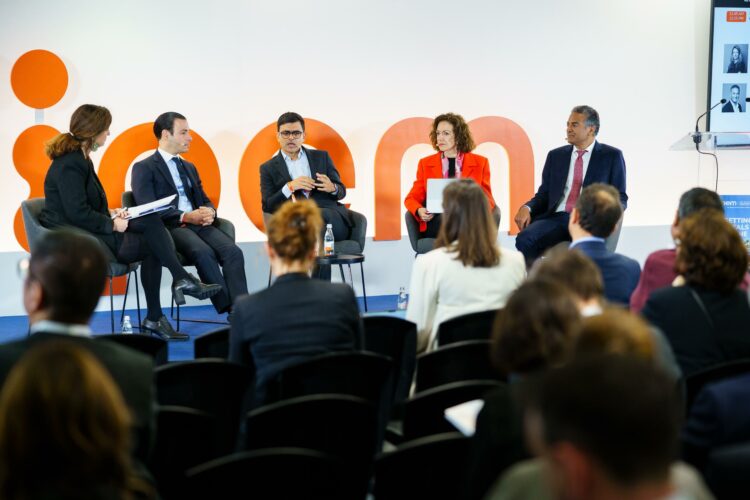
Find below the full Photo Gallery of DAY 2
Find below all the TV Studio Interviews of DAY 2
The shifting role of LPs was the overarching theme for the morning session of Day 2, at the 10th edition of IPEM in Cannes. After a full day of yoga, industry discussions, networking, and evening drinks, the knowledge sharing showed no lack of enthusiasm as private market practitioners contributed to a range of topics, from the LPs’ perspective.
The first-panel session set the perfect tone, with Anastasia Amoroso, chief investment strategist, iCapital and Bruno Sollazo, Group Head of PE Investments, Generali, offering their views on the subject of “How the rebalancing of power works in practice”. In some respects, private markets have been a victim of their own success. The industry has grown immensely over the last decade. This has led to more private investor interest, and attracted the attention of regulators, with the SEC last summer introducing new rules and rule amendments to enhance the regulation of private fund advisers. This is largely due to the prevailing perception that a veil of secrecy and a lack of transparency still exits, and investors need greater protection.
If this is an asset class that goes to $28 trillion in the next 15 years or so, transparency, compliance, and regulation are only going to increase.
“I think it’s because of the growth of the industry. Alternatives have gained market share as mutual fund market share has declined. For years, private investors have heard about the Endowment Model but haven’t had the access,” said Amoroso.
Over the last six months, a number of large GPs have launched semi-liquid evergreen PE funds; it’s been a quantum leap. There is no clear appetite from private investors and supply is coming from the GP community. This is creating alignment. Moreover, putting redemption limits on semi-liquid funds will help investors and RIAs alike better understand the benefits of private market funds, and will be “another way to square access with education”, Amoroso said.
Sollazo cautioned that sometimes investors aren’t able to understand what is going on with valuations. The pricing must be solid. Long-term alignment with LPs, combined with the solidity of pricing, should go into the valuation, in his view. Amoroso commented that GPs do a good job of expressing fair value “on the day” and noted that the combination of public and private market investments is a good stabilizer in a portfolio. She said the inherent structure of PE provides significant GP/LP alignment but more work is needed on disclosing performance, fees, and access.
“As investors, we believe the current situation will create more selection in the market: only strong GPs who are able to use a low degree of leverage and create operational improvement, will attract meaningful commitments. It’s going to create more selection in the market and more protection for investors,” said Sallazo.
Value sharing could still improve
As LPs assess their fund managers, one way to deepen their understanding could be to gain better insight on GP economics and team incentives: a topic that Dominique Gaillard, Executive Chairman, Armen, presented to the audience. He shared the results of the initiative Armen conducted with HEC on how well GPs are implementing sharing value mechanisms, in areas such as carried interest and shareholder ownership of management companies. Armen is a European pioneer in GP stakes investing.
The survey results of this value-sharing index (sample set of 223 qualified GPs) revealed that for carried interest, nearly 60% of GPs share carry with more than 50% of their employees. As GPs grow, and their AUM becomes more substantial at the management company level, it gets harder for younger employees to become shareholders. The results are shared in full on Armen’s website. Certainly, size matters, when it comes to carried interest. As larger GPs can offer more options to retain talent, they share less carry.
Interestingly, regardless of size, there is still limited access to shareholder ownership in the management company, with Gaillard showing the audience that only 20% of participating GPs have opened their equity to more than 50% of their team.
The key takeaway is that there is still room for improvement as European GPs think about value sharing across their organizations.
Gaillard revealed that the top-ranked manager in the index was ICE Capital, followed by Capra, and third place shared between Nordika and Cerea Partners.
On the panel “What’s a Successful Deal for LPs?” the focus switched to how LPs think about mapping their GP targets, and the various aspects that go into their investment due diligence process. The panel explained the importance of conducting deep research in sectors and geographies to track and invest in the best funds.
Daniel Kylander, investment analyst, private equity, Church Commissioners for England, explained that they look not only at how strong a GP’s track record is with their current fund, but they also look at their track record at their prior firm(s) to best understand what specific changes they made to improve companies.
Alvaro Gonzalez Ruiz-Jarabo, Managing Partner, Balian Private Equity, explained that as a fund-of-fund investor that also looks at co-investments, they use an initial scoring system to identify the best opportunities. “Then we develop more detailed scoring in the lower middle market. We are very specific in terms of what we are looking for,” he remarked. “Scoring gives us some hints but at the end of the day, you need to see how the GP and co-investment deal fits into the overall portfolio. This requires flexibility. We want to know that the strategy makes sense and the GP has been operating in the same sector for a good amount of time.”
Faisal Rafi, Global Head of Research, Riscura, added that some of the best commitments the firm has made in the past have been after the GP has gotten things wrong in their prior fund.
Asked whether the level of IDD changes at all when re-upping with GPs, Ileana Bolcato, Head of Group PE Portfolio Management, Generali, said: “For us, we follow the portfolio management activities – how does the GP price unrealized assets? The IDD is a little bit lighter when we re-up but it is essential for us to have a liquidity event before we would consider it.”
Another focus of conversation during the morning was on governance and transparency.
Speaking on the panel “Why LPs Need a Common Voice on Governance and Transparency”, Carolin Blank, Managing Director, Hamilton Lane, remarked that while there has been some improvement it is not a “completely LP friendly environment”. Although Gaetan Aversano, CEO, Union Bancaire Privee, noted that GPs are offering steeper discounts when fundraising.
He explained that “More transparent GPs can be a sign of operational excellence, where they have robust reporting and governance structures in place.”
Reporting remains a big area of inconsistency with the panel noting that they still see some pushback from GPs when it comes to reporting at the portfolio company level; only about 50% of GPs are providing this.
One trend that could push LPs towards finding a more common voice is the rise of semi-liquid fund structures. “We expect full transparency on the mechanisms in place to provide liquidity. We need to make sure the valuation practices and processes are extremely robust,” said Aversano. In that respect, it is even more important than in closed-ended funds.
The sentiment seems to be that as GPs tap capital from private investors they will need to provide more transparency in these semi-liquid vehicles.
It was agreed that under the SEC rule changes, it should help mitigate conflicts of interest: for example, where the GP has to provide a third-party fairness opinion or valuation opinion.
One area where further strengthening of legal documentation is needed pertains to the use of NAV loans. Currently, only 20% of LPs restrict GPs from using NAV loans without LP approval.
Also, it was suggested that ESG provisions made by individual investors could benefit all other investors if the information is shared and made more transparent. This would make it easier for LPs to benchmark GPs against their peers.
The morning also focused on sustainability, led by the panel “How to Deploy Green Infrastructure Capital With a Sustainability Agenda”. Speaking on this panel, Guillaume D’Engremont, Managing Director and Head of European Infrastructure, ICG, confirmed that the firm launched its infrastructure business five years ago, with two key focus areas: energy transition and digitalization.
Spotting the right business model and management team is key, with more players in the infrastructure space willing to take risks.
“It’s important for us to make sure we have an exit plan that is set in place from the start,” said D’Engremon. He used one of ICG’s recent investments, Zeplug, as an example. The company is one of France’s leading EV charging businesses, where the end users subscribe to use the chargers. As they can charge overnight from their homes, the costs are cheaper and there is less of a burden on the power grid. “This makes it more sustainable,” added D’Engremon.
Johnny El Hachem, CEO, Edmond de Rothschild Private Equity, emphasized the importance of combining infrastructure investing with proven technologies. In Europe, there is still a lack of infrastructure to power fleets of trucks with hydrogen, for example; it simply isn’t in place. Asked about carbon finance, El Hachem said: “Projects that require subsidies won’t be successful in the long run.” He said that the firm’s deal focus is on mobility and social infrastructure and with EUR150 billion available to be deployed (according to Preqin), this should present “fantastic opportunities”.
Summit session insights
The morning Healthcare Summit provided fascinating insights from a selection of speakers. As a market it is huge, representing 9.2% of the GDP of OECD countries. There are many aspects to why this is such an appealing asset class. During the summit, Emmanuel Parmentier, Managing Partner, Indefi, referred to four reasons: 1) profitable and resilient companies; 2) structural growth dynamics (aging population); 3) attractive investment thesis (e.g. organic growth or buy & build), and 4) real-world impact.
Technology is playing a huge role in the evolution of Healthcare. During the summit, it was noted by Ricardo de Serdio, speaking on “The 2024 outlook for healthcare investments” session that AI is improving efficiency and profitability for an imaging company, which is “good news”.
Chiara Brambillasca, Private Equity Associate, Pictet, added that generative technology is one of the “main disruptions”. “Generative AI can help design drugs. It is enhancing drug discovery in terms of efficiency.”
AI is expected to further help researchers and physicians in the treatment of diseases and lengthen life expectancy. This has, in part, contributed to a surge in pharma and biotech M&A activity, which grew 30% in 2023 to over $100 billion of total disclosed deal value.
Secondaries maintain appeal
During the Secondaries Summit, it was stated in no uncertain terms that the market looks very favorable. This is due to three important characteristics of the market:
– Public markets might be larger but are experiencing a continued decline in listings. This makes them less attractive for IPOs, which decreases the likeability of IPOs as an exit option.
– IPO buyout exits are less than half the proportion of five years ago.
– Public valuations appear to be out of sync with private markets.
Under these circumstances, while fundraising has proven to be hard for Private Equity, for secondaries it has soared. Secondaries AUM has grown to $470bn and expectations are that it will grow to $1.5tr by 2028.
Although this would still leave secondaries at about 3.1% of the private markets, it reflects the sentiment of investors. This is substantiated by the fact that over the last couple of years, secondaries have structurally outperformed private equity primaries.
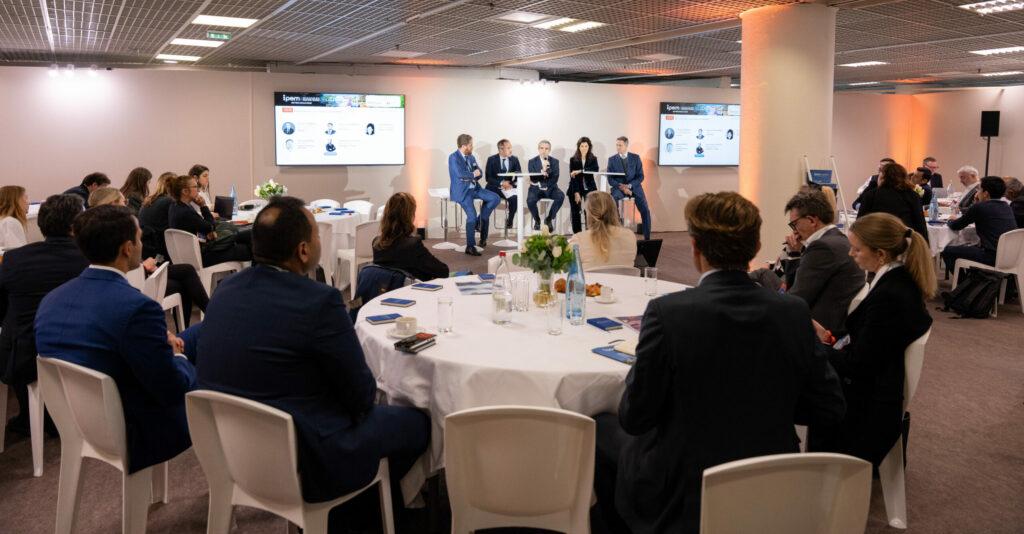
Record attendance makes the 10th edition a special vintage
Here’s the headline: the 10th edition of IPEM was 28% bigger than last year, as Europe’s private markets industry convened on the French Riviera to talk deals.
What a positive mood!
Over 3,300 delegates attended, including 483 GPs, 322 investors, and 306 advisors. In total, IPEM welcomed delegates from 1,307 firms, representing 46 countries, and brought 199 speakers to share their industry expertise.
During the afternoon session, speakers outlined their views on whether rebranding private markets as a retail investment opportunity was valid, or merely a mirage. Technology, led digitization, and specifically tokenization of assets on the blockchain, could well be the next solution; indeed, several prominent investment firms have already begun to offer tokenized funds as they bid to tap into a wider investor base.
As Maurice Tchenio, Co-founder, Altamir, pointed out on the panel, “What it Takes to Tap into the Retail El Dorado?” only 10% of US investors are invested in private equity. The opportunity now exits to educate RIAs and for GPs to structure fund products for a retail audience that is capable of delivering pure PE returns. Hannah Wallis, Co-head of Multi Alternative Strategy EMEA at BlackRock, highlighted that wealth and retail clients account for 40% of the firm’s growth. It has developed the BlackRock Alternatives Academy to educate people on private markets, underscoring how important this shift is toward the broader private investor community.
Family offices sit higher up the investor food chain and, depending on their size, have become more active direct investors in recent years. This confidence has come through building a deeper knowledge of the market via commingled and co-investment opportunities, although determining when to go direct, and when to stick with GPs, is not always a straightforward proposition.
This was discussed in the panel session, “Family offices – getting closer to the action”.
As Roy Awad, Managing Partner of White Peaks Capital, explained by way of background, White Peaks was founded specifically to seek out direct investments for a family office, which had already spent several years committing capital to numerous PE buyout funds. This was a similar case for Perwyn, also a Single Family Office, after they had explored the traditional fund route, allocating to the likes of KKR. But as Andrew Harrison, Partner and Head of Capital Formation at Perwyn explained, 10 years ago the family members decided it would be worth building a direct investment program as it would allow for more interaction “with the businesses that we own”.
Harrison said “It’s a return enhancer in terms of doing it directly. They’re not paying the same level of fees that they would do to an additional manager.”
One of the benefits to why family offices pursue direct deals is that it allows them to be fully aligned with the businesses they buy, especially when they are founder-owned. There’s no ulterior motive to exiting these businesses other than when the family office feels it has taken them as far as possible. In other words, there is no pressure to sell businesses to raise DPI for LPs; it’s a clean process.
An important step change discussed on the panel is that over the last couple of years, family offices have started to syndicate deals by bringing in co-investment partners. This is opening up the deal avenue to other like-minded family offices. Awad said that establishing a value-creation plan takes time “because you need to have the right setup, the right process, and the right people”.
From a multi-family office perspective, Nancy Curtin, Global CIO of Alti Tiedemann Global talked about the importance of the GP relationships it has built over the last two decades. This means the firm is able to tap into a huge amount of GPs, providing clients with access to a lot of co-investments thanks to the quality of those sponsor relationships. “I think it’s really important that you establish with the family the idea around diversification, discipline and price, understanding the P&L and the cash burn. These are things you need to understand if you’re going to take a direct investment in a company.”
With valuation concerns driven by market volatility, she noted that the firm has passed on many co-investments it has been offered, investing in only a handful over the last two years.
Let’s continue shall we?
At the institutional LP level, continuation funds remain an alluring option as the PE deal landscape evolves. This even applies to traditional PE shops, as they look for ways to still do deals and acquire trophy assets, even if it means gaining exposure through a continuation vehicle. This is something that Michal Lange, Partner, Co-Head, GP Equity Solutions at Astorg discussed on the panel “Continuation funds – the neverending story?”
“This is a great market for buyers. We decided to set up a dedicated team to pursue continuation fund investments. We find it highly attractive when building high conviction portfolios,” said Lange.
The appeal of continuation funds is partly because the macro environment has deteriorated and GPs have struggled with traditional exit routes.
But as Marion Cossin, Managing Director, Private Capital Advisory at Lazard mentioned: “More importantly, perceptions have changed as GPs have used continuation vehicles for high-quality assets.”
This has shifted the view of the marketplace that they were only ever used when trying to restructure problem assets.
But when should GPs sell an asset or choose to roll it into a CV? Bernhard Engelien, Managing Director at Greenhill & Co., where he heads up its European Secondary Capital Advisory business, said that it makes sense to use a continuation fund if the GP has a high-quality single asset that still has further value creation potential. This could potentially avoid the GP having to sell to a competitor or trade partner, potentially at a discount. “Companies need to have a certain size for these vehicles to work, however,” he said.
From an investor’s perspective, Kristof van Overloop, Managing Director, Flexstone Partners, noted that while these vehicles may allow you to lock in a higher capital multiple (and generate higher potential returns), various considerations have to be thought through i.e. what is the credibility of the business re-set plan? What is the projected future value creation? Does the GP expect to pull additional operational levers? If so, that might dictate a sell option.
“Continuation funds are here to stay. There are a number of larger deals in the market,” said Engelien. In his view, GP-leds will continue to be an important tool in 2024.
One final aspect of deal dynamics discussed during the afternoon session related to M&A activity at the GP level as the private markets space heads towards further consolidation.
“When you buy a GP, you normally end up with a very rich team! What we have come to understand at Sienna is that distribution and product are key factors, to make the merger worth something, building products together, so that the management team doesn’t take the money and run,” outlined Paul de Leusse, Group CEO, Sienna Investment Managers.
He added that what makes a successful acquisition comes down to building the right culture. When buying a new GP, he said the firm will ask the partners of all its existing GP investments to meet with them. Do the senior guys get on? “Quality of team is important. Also, is the LP complimentary and well diversified?” he said.
Alongside de Leusse on the panel “Keeping up With a Fast-Changing GP Landscape” was international investment banker Antoine Dupont-Madinier, Managing Director, Lincoln International. He referred to the importance of knowing how the carried interest is distributed, as this can have an overall impact on a GP’s valuation.
Looking at the current landscape, Dupont-Madinier said, “It’s more about expanding revenues and growing the top line,” as the private markets industry consolidates.
Key success relies on culture said de Leusse, Build a common culture by working together: sharing a booth at IPEM, going on road trips… working on something together, failing together. Whether it is minority or controlling GP stake investments, the aim is to develop successful long-term relationships.
Summit sessions
Energy Transition and Private Debt were the two key themes of the afternoon summit sessions during the afternoon on Day 2 of IPEM. On energy transition, LPs discussed ESG integration and climate roadmaps as becoming an essential requirement, with Jean-Philippe Richaud, Deputy CEO& CIO at Swen Capital Partners referring to it as a fiduciary duty: “We became a mission-driven company recently. Tackling the climate issue is key at the moment. We will commit all our funds to take into account climate and biodiversity impact.”
Article 8 and Article 9 funds under SFDR are helping to give LPs assurances on sustainability investment objectives but that only goes so far. As Ferdinand Dalhuisen, Managing Director at Oddo BHF, the Franco-German financial services group, remarked it comes down to intentionality. “You say what you do and you do what you say. This type of thinking is so much more important than an Article 8 or Article 9 classification,” said Dalhuisen. He believes energy transition provides an enormous economic opportunity.
Private equity fund managers such as SWEN Capital Partners have been at the vanguard of sustainable investing, in areas including energy transition, for many years. The firm has a strong focus on green gas (“renewable gas”), with Charlotte Virally, Investment Director, SWEN Impact Fund Transition, noting that in electric renewables there have been some large exits.
Virally explained: “We need to invest large amounts in numerous sectors for energy transition. We are talking about infrastructure, technology, equipment, equipment manufacturing, and new energy projects. The private and public sectors both have a role to play in this.” She referred to how the biomethane sector had become a mature sector following early public sector subsidization. Hydrogen projects are today at that early stage and will require government efforts to kickstart this industry.
Pierre Abadie, Managing Director and Group Climate Director, Tikehau Capital, referred to the megatrend of energy value chains, which have grown at 11% year-on-year but highlighted how much more investment still needs to be made: “We need to be net zero by 2050. We need to halve CO2 emissions and we need 80 million kilometres of power lines on earth to make net zero happen. This is the distance from Earth to Venus.”
Antoine Colson, CEO and Managing Partner of IPEM came on the stage at the end of the day to thank everyone for attending and contributing to making the 10th edition a fantastic vintage: “We look forward to seeing you all again in September 2024 in Paris for our international fundraising jamboree!”
A celebratory cocktail on the terrace was the perfect way to conclude proceedings as the sun slowly slid below the horizon.
Thank you to all IPEM Cannes 2024 Sponsors! 🏆



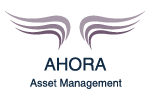


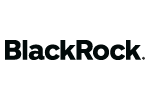

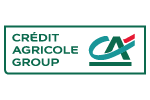
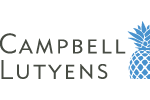
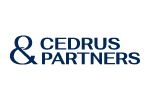



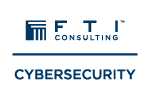

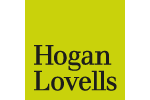

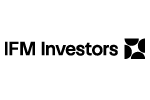



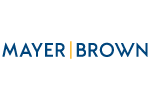
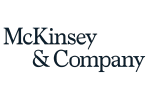
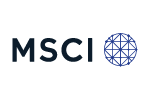
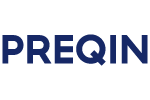

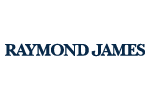
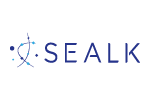

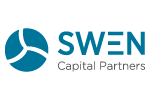
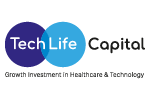
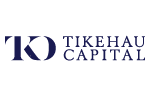
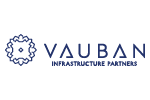

IPEM Knowledge Partners! 🏆

IPEM Industry Supporters! 🏆

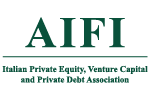

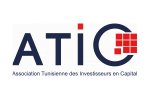


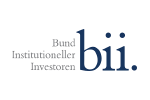
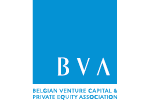
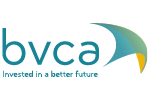
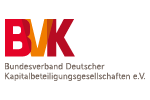

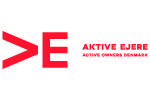
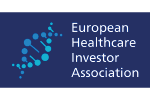
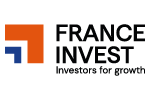

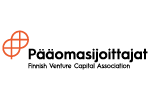
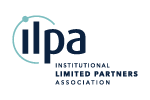
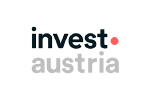

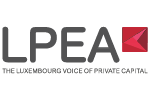
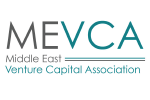

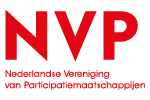




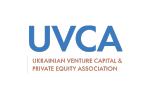
And IPEM Media Supporters! 🏆
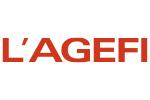




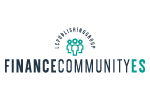







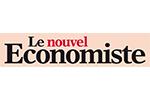
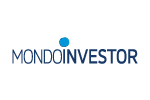












The shifting role of LPs was the overarching theme for the morning session of Day 2, at the 10th edition of IPEM in Cannes. After a full day of yoga,…
Fill-in the information below to submit your event.
Fill in the information below to download the Survey.
Fill in the information below to download the Product Catalog.
Fill in the information below to download the Investor Package.
Fill in the information below to register as a journalist.
Fill in the information below to download the Factsheet.
Fill in the information below to download the Product Catalog.
Fill in the information below to download the list of firms.
Fill in the information below to download the LP Package.
Fill in the information below to download the Factsheet.
Fill in the information below to download the Wealth Discovery Package.
Fill in the information below to download the IPEM Playbook – Navigating the Wealth Revolution.
Fill in the information below to download the Factsheet.
Fill in the information below to download the Full Report.
Fill in the information below to download the Product Catalog.
Fill in the information below to download the IPEM LP Package 2025.
Fill in the information below to download the Program.